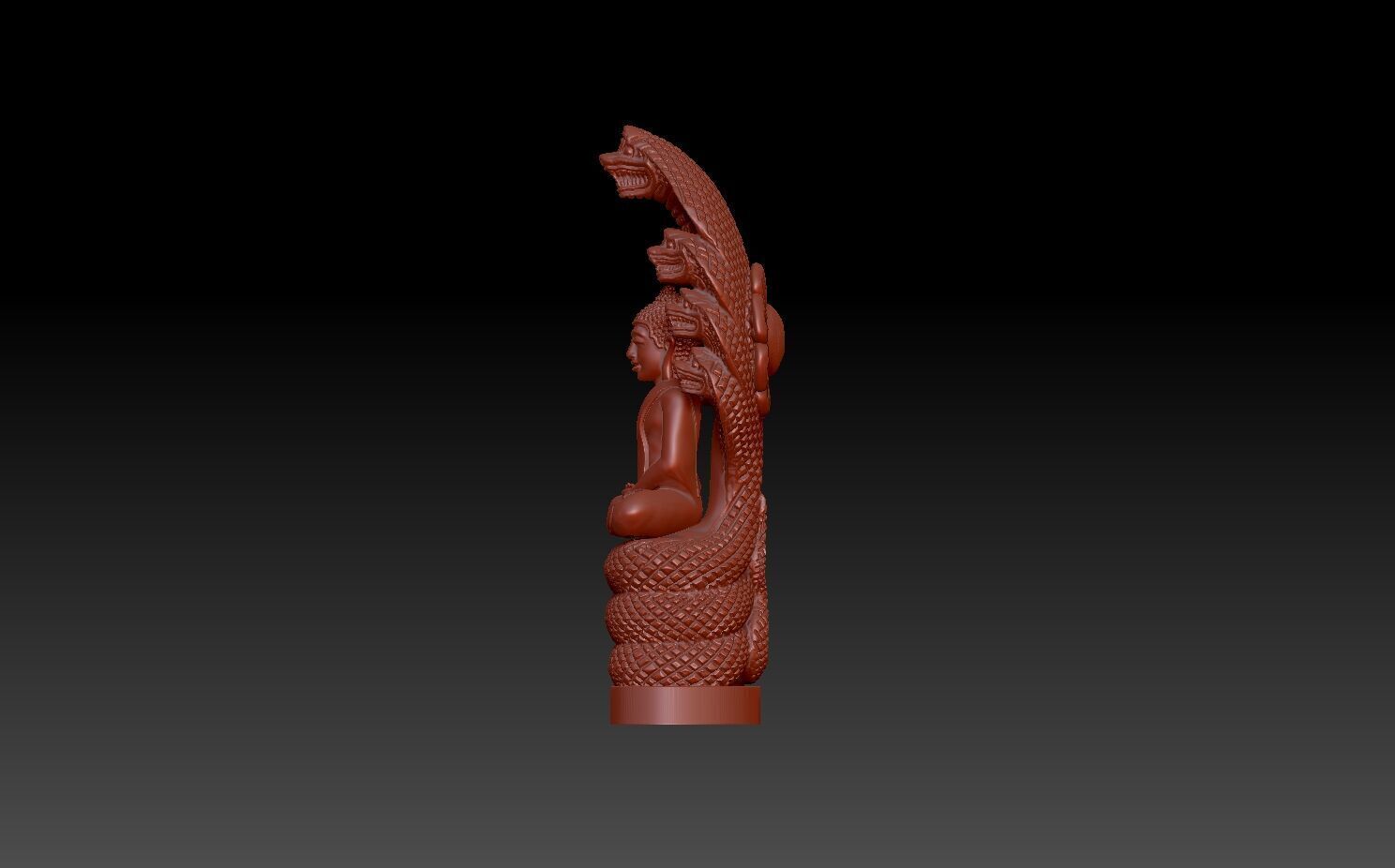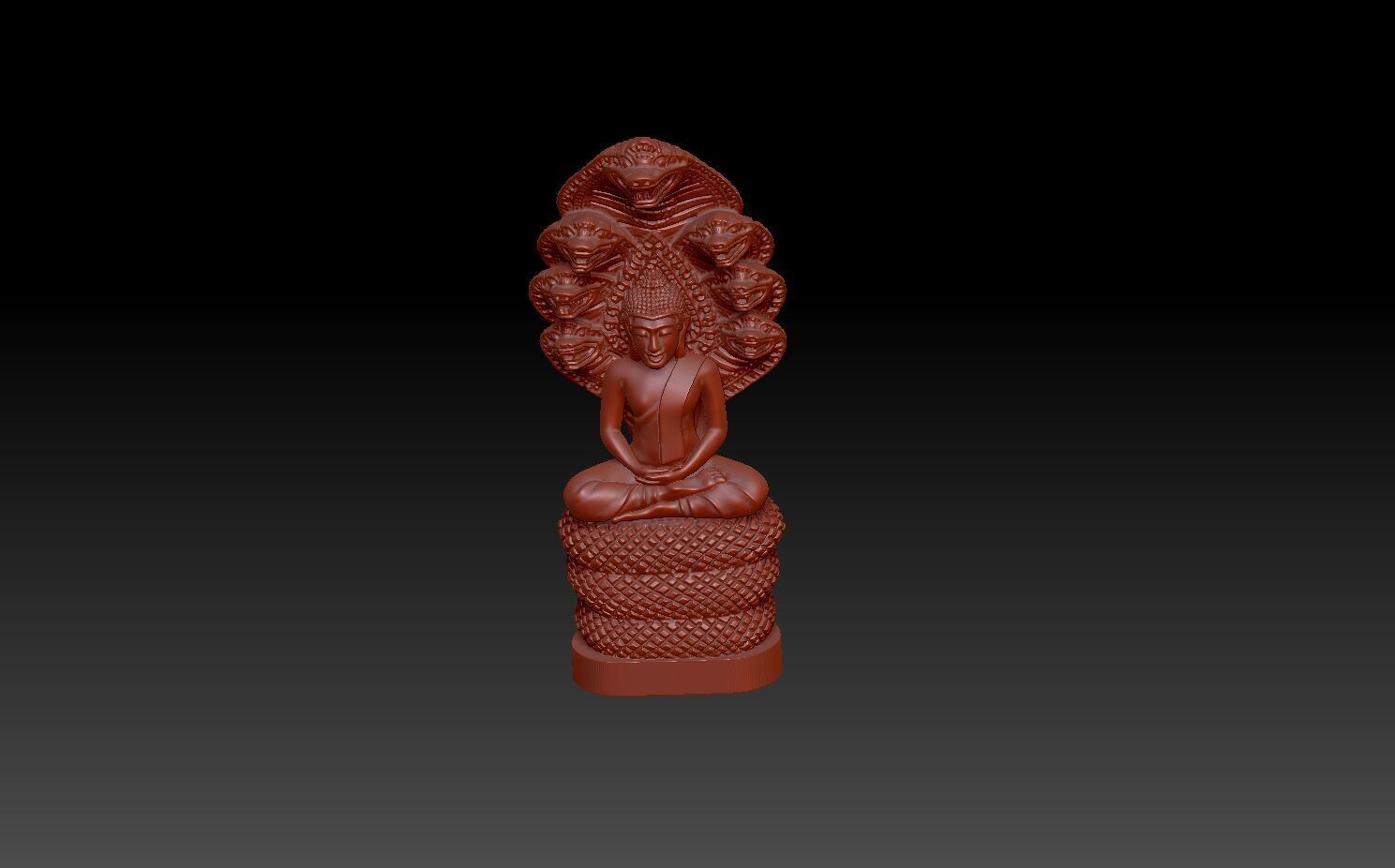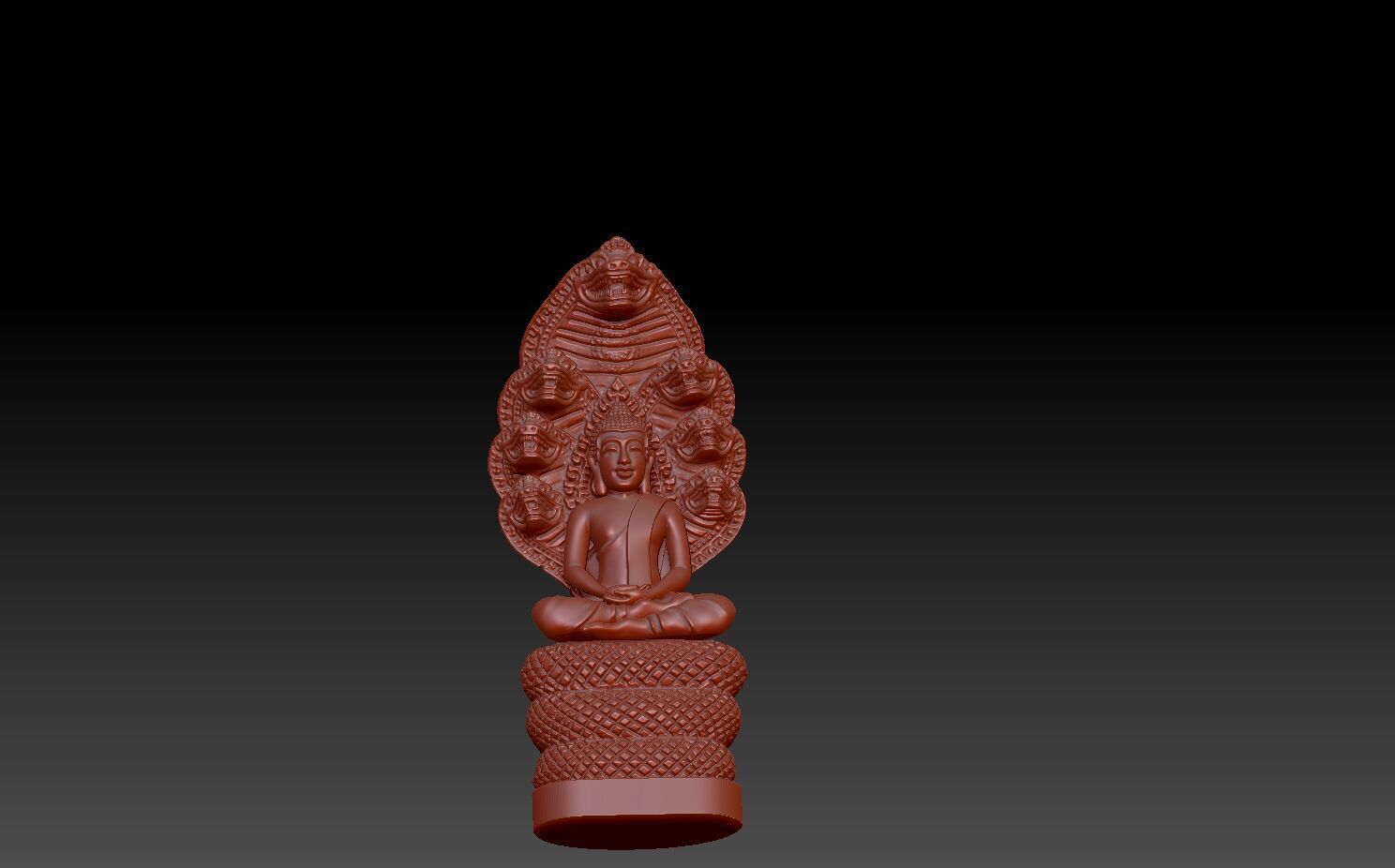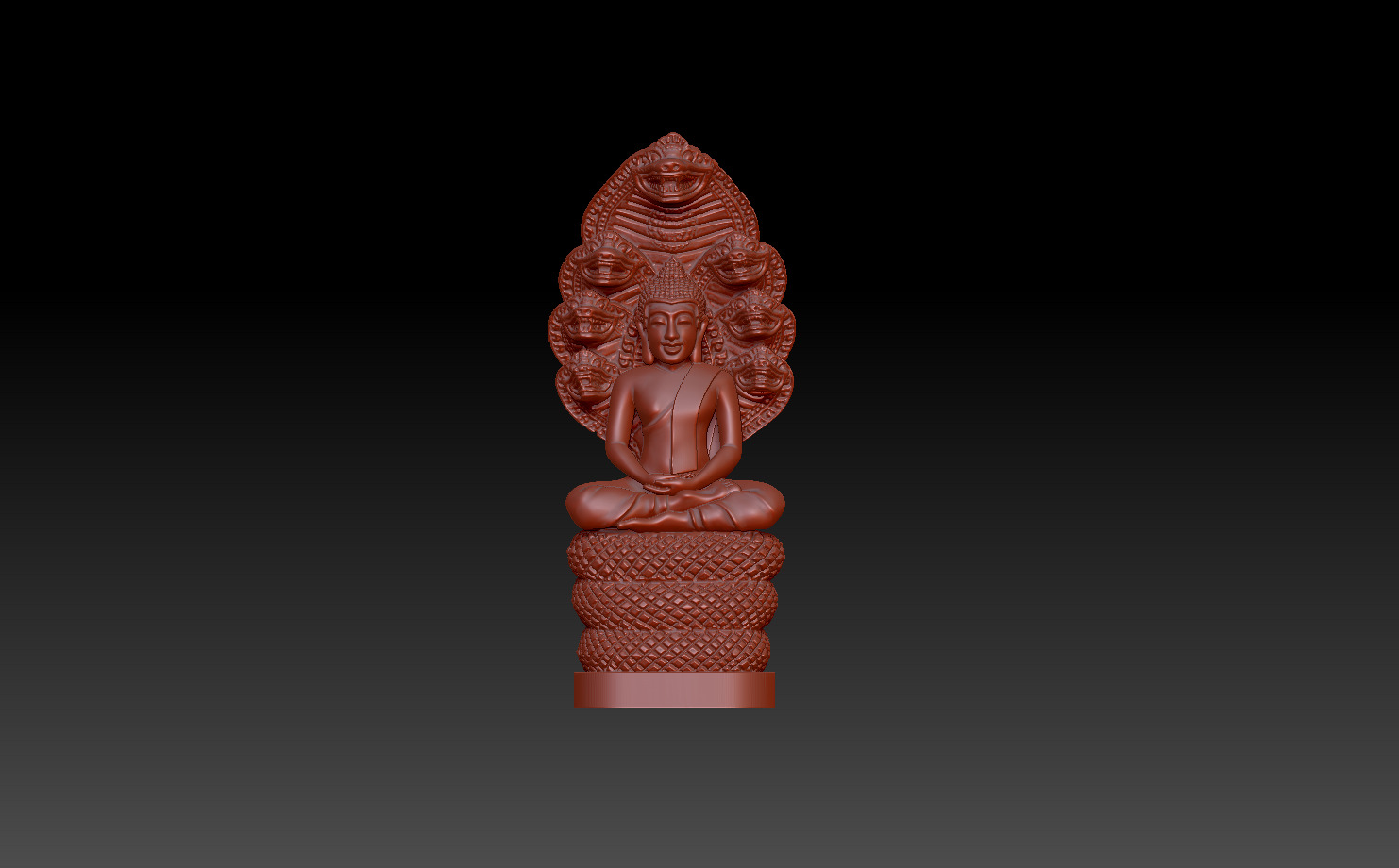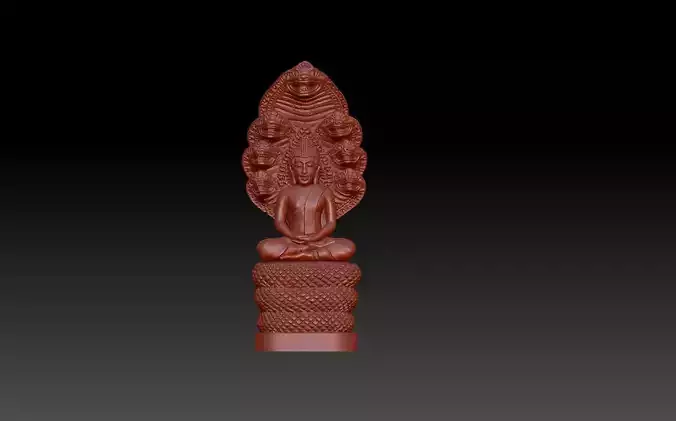
buddha with dragon style 3D print model
The image of Buddha with a snake (or serpent) is a powerful symbol in Buddhist art and mythology. Here are the key meanings and representations:
- Mucalinda Buddha – The Serpent-Protected BuddhaOne of the most famous depictions shows the Buddha seated in meditation under the protection of the Mucalinda Naga (a king of serpents).
According to Buddhist texts, after attaining enlightenment, the Buddha meditated for weeks. When a great storm arose, the naga (serpent) Mucalinda coiled around him and spread its hood like an umbrella to shield him from rain and wind.
This symbolizes protection, wisdom, and the harmony between humans and nature.
- Symbolism of the Snake in BuddhismTransformation & Rebirth: Snakes shed their skin, representing spiritual renewal.
Protection & Power: Nagas (serpent deities) are guardians of treasures and sacred knowledge.
Duality: Snakes can symbolize both danger (ignorance, anger) and enlightenment (awakening, Kundalini energy in some traditions).
- Artistic DepictionsStatues & Paintings: Often show Buddha seated on the coils of Mucalinda with the serpent’s hood covering his head.
Southeast Asian Buddhism: Common in Thai, Cambodian, and Lao Buddhist art.
- Connection to Other TraditionsSimilar to Hindu depictions of Vishnu resting on the serpent Shesha.
In yoga/Tantra, the serpent (Kundalini) represents spiritual energy rising through the chakras.
Would you like details on a specific statue, cultural variation, or meditation practice related to this imagery?

